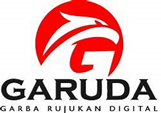EFEKTIVITAS APLIKASI BEBERAPA HERBISIDA SISTEMIK TERHADAP GULMA PADA PERKEBUNAN KELAPA SAWIT RAKYAT
Abstract
ABSTRACT
The objective of the study were to find the dominant weeds in palm oil plantation before application of weeds control using effective active compound of systematical herbicide. Research done in Glorious Countryside Petaling, public plantation, River Gelam, Muaro Jambi, Jambi Province in January--Februari 2008. The research used active compound of herbicide gliphosate amine
isoprophyll, 2,4 D-dimethyllamine, gliphosate isoprophyllamine + 2,4 D dimethyllamine, and triasulphuron 75%. The study was conducted using Randomized Completely Design, with 5 replicates. Data were analyzed by Duncan’s Multiple Range Test (DMRT). Data analysis of weeds vegetation
using SDR values. Result found 5 dominants weed species before herbicide application were Imperata cylindrica (with SDR value 27,8%), followed with Asystasia intrusa ( SDR = 9,4%), Affinae melastoma ( SDR = 9,2%), Repens panicum ( SDR = 8,2%), and Borreria alata ( SDR = 7,7)). Glyphosate isoprophyllamine of herbicide active compound which suitable to control grass weed species; while 2,4 D dimethyllamine active compound more suitable to control the wide leaf weed. Imperata cylindrica controlled with herbicide using gliphosate isoprophyllamine active compounds. Asystasia intrusa and Affinae melastoma controlled with 2,4 D dimethyllamines active coumpound. Weed competition reduce of crop production.
Key words: active compound, herbicide, weed, palm oil
Keywords
Full Text:
PDFReferences
DAFTAR PUSTAKA
Anonim, 2000. Pestisida Untuk Pertanian dan Kehutanan. Komisi Pestisida Departemen Pertanian. Jakarta.
Anonim, 2006. Gulma. http://www.id.wikipedia.org Dinas Perkebunan Provinsi Jambi, 2004. Laporan Tahunan Dinas Pekebunan Provinsi Jambi.
Kastono D. 2004. Arti, Peran, Sifat dan Klasifikasi Gulma. Laboratorium
Manajemen dan Produksi Tanaman Jurusan Budidaya Pertanian UGM.
Yogyakarta. http://www.elisa.ugm.ac.id.org.
Kusmana, C. 1997. Metode Survey Vegetasi. Institut Pertanian Bogor. Bogor. Manuel Barus, 2003. Penegendalian Gulma di Perkebunan. Kanisius. Yogyakarta.
Nurjanah, U. 2002. Pergeseran Gulma dan Hasil Jagung Manis pada Tanpa Olah Tanah Akibat Dosis dan Waktu Pemberian Glyphosat. Publikasi. Fakultas Pertanian. Universitas Bengkulu. Bengkulu. http://www.bdpunib.org.
Purba, E. 2000. Pengujian Lapangan Efikasi Herbisida Ristop 240 AS terhadap Gulma pada Budidaya Karet Menghasilkan. Publikasi. Program Studi Agronomi Fakultas Pertanian. Universitas Sumatera Utara. http://www.library.ac.id.
Rukmana, R., dan Saputra, S. 1999. Gulma dan Teknik Pengendalian. Kanisius. Yogyakarta
Sastrosayono, S. 2004. Budidaya Kelapa Sawit. AgroMedia Pustaka. Depok.
Sulitar, L.P. 2003. Evaluasi Beberapa Herbisida untuk Pengendalian Gulma pada Piringan Kelapa Sawit Muda. Prosiding Konfrensi Nasional XVI Himpunan Ilmu Gulma Indonesia (HIGI) Seameo-Biotrop Bogor. Hal. 160 – 170.
Yan, F. Widyastuti, Y. Satyawibawa, I. Hartono, R. 2002. Kelapa Sawit:
Budidaya, Pemanfaatan Hasil dan Limbah, Analisis Usaha dan Pemasaran. Penebar Swadaya. Jakarta.
DOI: http://dx.doi.org/10.33512/j.agrtek.v2i1.623
Refbacks
- There are currently no refbacks.
Copyright (c) 2016 Jurnal Agroekoteknologi
INDEXED BY:
View My Stats

This work is licensed under a Creative Commons Attribution 4.0 International License.










